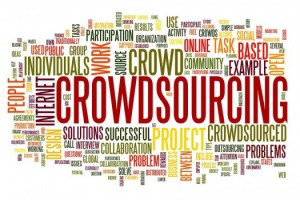 Just look at record sales – it’s no secret that record companies and the traditional approach to making and promoting music are becoming obsolescent. In place are digital technologies, with multiple properties working together: Facebook and Twitter to build the fanbase, Soundcloud (and Myspace, at one point) to get the tracks heard, and Kickstarter to fund the album.
Just look at record sales – it’s no secret that record companies and the traditional approach to making and promoting music are becoming obsolescent. In place are digital technologies, with multiple properties working together: Facebook and Twitter to build the fanbase, Soundcloud (and Myspace, at one point) to get the tracks heard, and Kickstarter to fund the album.
In fact, Kickstarter raised $20 million for musicians in 2011, and while its crowdsourcing approach is gradually replacing labels, artists – including DJs and producers – are using it for projects and collaborations.
The most well-known in the EDM sphere, at least in recent memory, is Avicii x You, a project between the producer born Tim Bergling and telecom corporation Ericsson. Launched at the Consumer Electronics Show on January 9, their collaboration is now requesting submissions from fans. Selected submissions for bass, melody, rhythm, and vocals will be produced by Avicii and materialize as his upcoming single, expected to drop on February 26. About this endeavor, Bergling told the press, “Actually involving a lot of people … and the end result
For each part of the track, Avicii selects three contributions and puts them up for fans to vote. A game element is added, of sorts, with contestants eligible for credits, tracks, and press opportunities. Proceeds from the single will go toward Avicii and manager Ash Pournouri’s charity House for Hunger.
Although Avicii’s approach moderately mirrors his own rise to fame via the internet, not everyone is impressed. Spin, in fact, described his “outsourcing” as a solution for writer’s block – one to combat a lack of creativity in Avicii’s post-“Levels” output.
While, perhaps, the most prominent examine of crowdsourcing in EDM, Avicii’s isn’t the only instance in which this approach was used for collaboration. Last year, Black Hole Recordings initiated a campaign for Richard Durand vs the World. The concept behind the album was this: for every content, a three-track disc (with five total for the release) included an original from Durand, a collaboration with an artist from that region, and a track submitted by a fan, which was obtained through crowdsourcing.
But for a handful of good-natured, if not beneficial, projects, others plainly look like established artists are taking advantage of lesser-known. Take Amanda Palmer’s Theater is Evil tour. Prior to that, the alt-rocker raised $1.2 million through Kickstarter to fund her album, but by the time she and her band got on the road, her latest crowdsourcing endeavor involved seeking out “volunteer musicians” in each location – with “beers, hugs, merch, free tickers, and love” as pay.
After an uproar from fans and critics, Palmer eventually came around and paid her “volunteer” musicians.
Kickstarter, however, is far from the only platform for seeking out musicians in some form, and in fact, toward specificity are sites like RecordTogether.com, describing its mission as “prov[ing] that some of the greatest musicians are the ones you haven’t heard of yet,” and Finnish startup AudioDraft.com, a site for composers and sound designers.
In fact, Nokia used AudioDraft.com in a quest to find a new, updated version of its iconic ringtone. After sifting through 6,000 submissions, the cell phone provider settled on a dubstep version.
Crowdsourcing music platforms, on the other hand, don’t always subvert the traditional conventions. Jelli, a social radio application designed to influence what’s played on stations, experienced over 250-percent growth over the past year, while Chartburst.com, also through a voting system, strives to bring unsigned acts to the attention of major labels’ A&R departments.
Chartburst.com’s founder Francis Gane described their mission, stating, “We were often surprised at how many great artists who came through our doors never seemed to make it in the way they should have which was disappointing. This got us thinking about the problem of getting heard by labels, and eventually led to the concept of Chartburst.”
Effective crowdsourcing, two pieces on NPR.com point out, requires a certain character, as well as work ethic and amount of time. Not only does an artist need to be well known, but also have a devoted following. Sinan Aral, a scientist who teaches at New York University, said, “Typically in talks I ask people to raise their hand if they follow Ashton Kutcher on Twitter or know who Ashton Kutcher is. Everyone raises their hand. I have them put their hands down and then I ask, ‘Who in the room has ever done anything Ashton Kutcher asked them to do?’ And typically one sheepish person will raise their hand.”
While an effective crowdsourcing campaign saves the artist money, artists not willing to solicit – and not equipped with a large following – are at a disadvantage. The artist or band, on the other hand, is the marketing force behind the campaign, including developing commercials and advertising to get fans’ attention. While creative, such an effort is ultimately time consuming.




